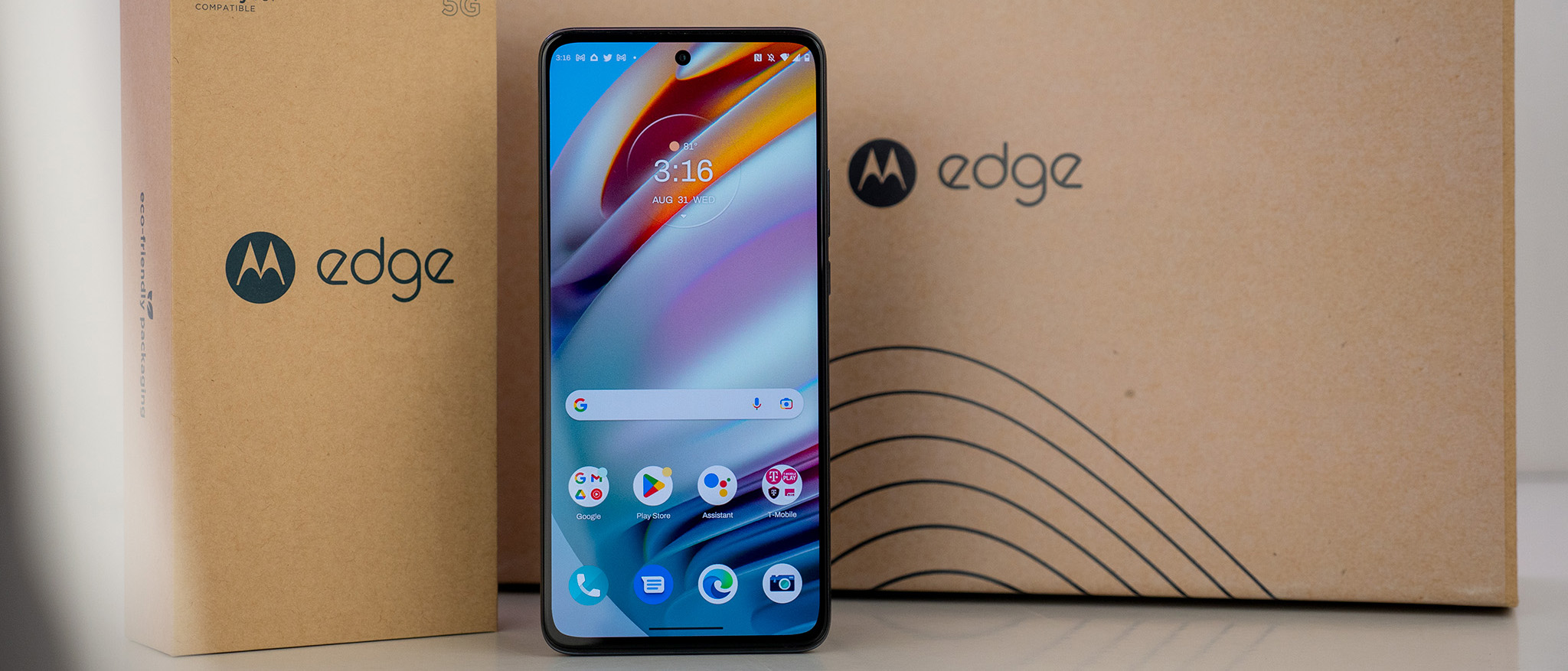Android Central Verdict
It might look like every underwhelming phone from Motorola's lineup over the past two years, but the Motorola Edge (2022) breaks the mold with a great experience and superb, minimalist software. It's also the first Motorola phone to get the promise of three major Android OS updates and four years of security updates. This is a huge step in the right direction for Motorola, even if the gaming performance and camera quality could use some work.
Pros
- +
Major software update commitments
- +
Great new fingerprint scanner and accompanying features
- +
Solid everyday performance
- +
Brilliant 144Hz AMOLED display
- +
Multi-day battery life
Cons
- -
Cheap plastic build
- -
Horrible haptic motors
- -
Hit or miss camera performance
- -
Gaming performance isn't great
Why you can trust Android Central
To say I haven't been happy with Motorola lately is an understatement, but it's not just me. Most Motorola phones released in the last year or two have been difficult to recommend and, at worst, downright awful values.
The Motorola Edge+ (2022) that I reviewed back in March of this year is probably the worst value I've ever seen from a phone from the company, and even many of Moto's traditionally value-heavy phones — like the Moto G Power (2022) — were just plain bad phones no matter how little you spent on them.
That all leads me to the Motorola Edge (2022), a phone that looks about as bland and similar to every other mid to upper-range Motorola has released in recent years, but delivers an experience that I've longed for from the company. With the exception of a cheap build and some truly atrocious haptic motors, the Motorola Edge (2022) is the single best phone Motorola has delivered this year.
It's also an excellent overall value at the special launch price of $499 but, like last year's Motorola Edge (2021), that price will go up after a brief period of time. Thankfully, this year's full MSRP is $100 lower than last year's device, all while delivering some truly important upgrades and, for the first time ever, Motorola's commitment to keeping the phone updated. The Edge (2022) will receive three major Android upgrades and bi-monthly security patches for the next four years.
Motorola Edge (2022): Pricing and availability
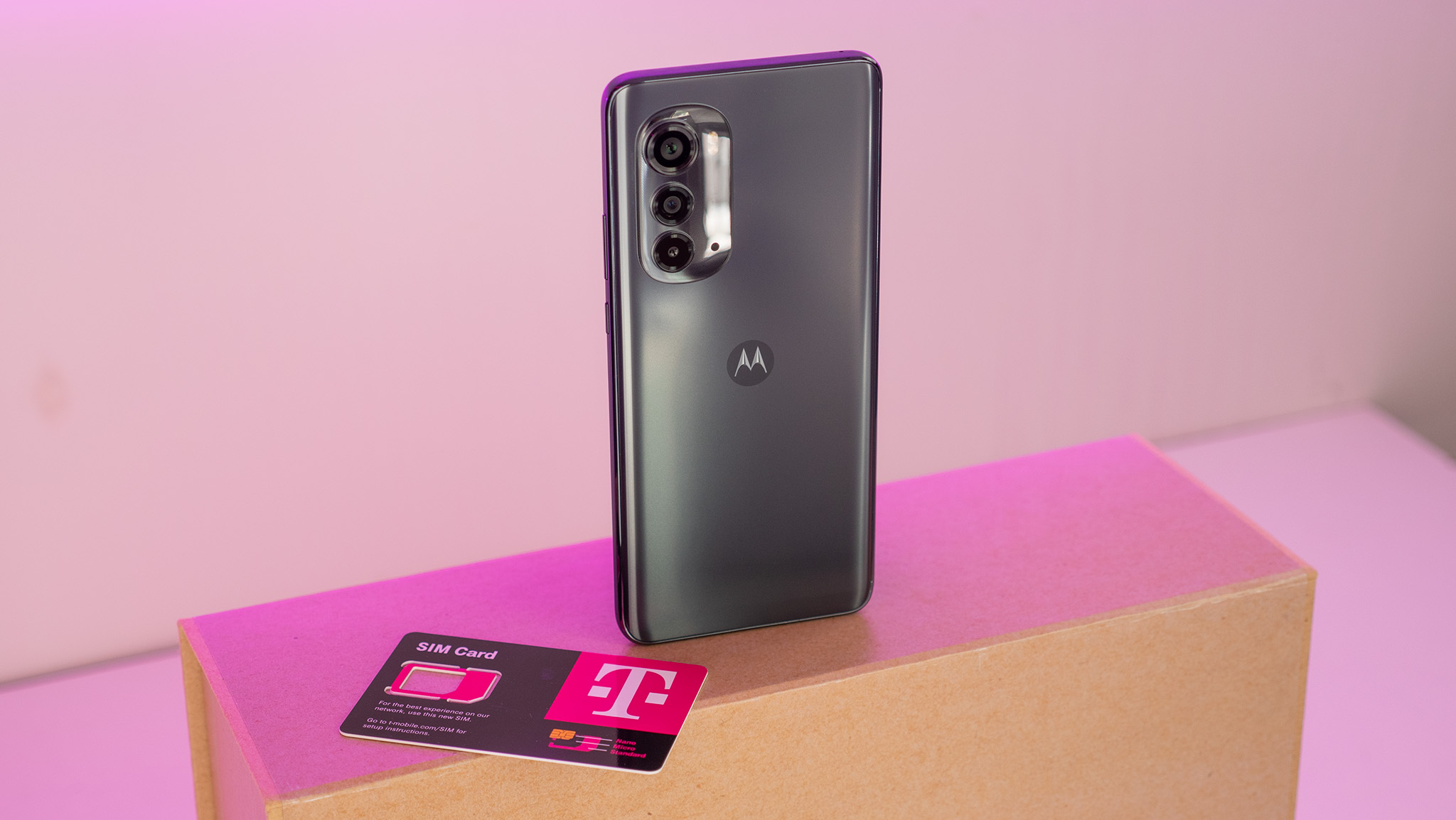
Motorola will begin selling the Motorola Edge (2022) on September 1, 2022, at T-Mobile stores for $498. That's a limited-time price that will go up to the MSRP of $599 after an undisclosed period of time. T-Mobile is also offering a free Motorola Edge (2022) for a limited time to customers who add a new line to their existing plan.
The unlocked Motorola Edge (2022) will be available for preorder starting September 1, 2022 at Best Buy, Amazon.com, and Motorola.com for the limited launch price of $499. Orders will begin shipping on September 22, 2022. Eventually, the unlocked price will also be the full $599 MSRP.
Motorola ships the Edge (2022) in a single colorway, Mineral Gray, and packages everything in an eco-friendly plastic-free box.
Motorola Edge (2022): What I like
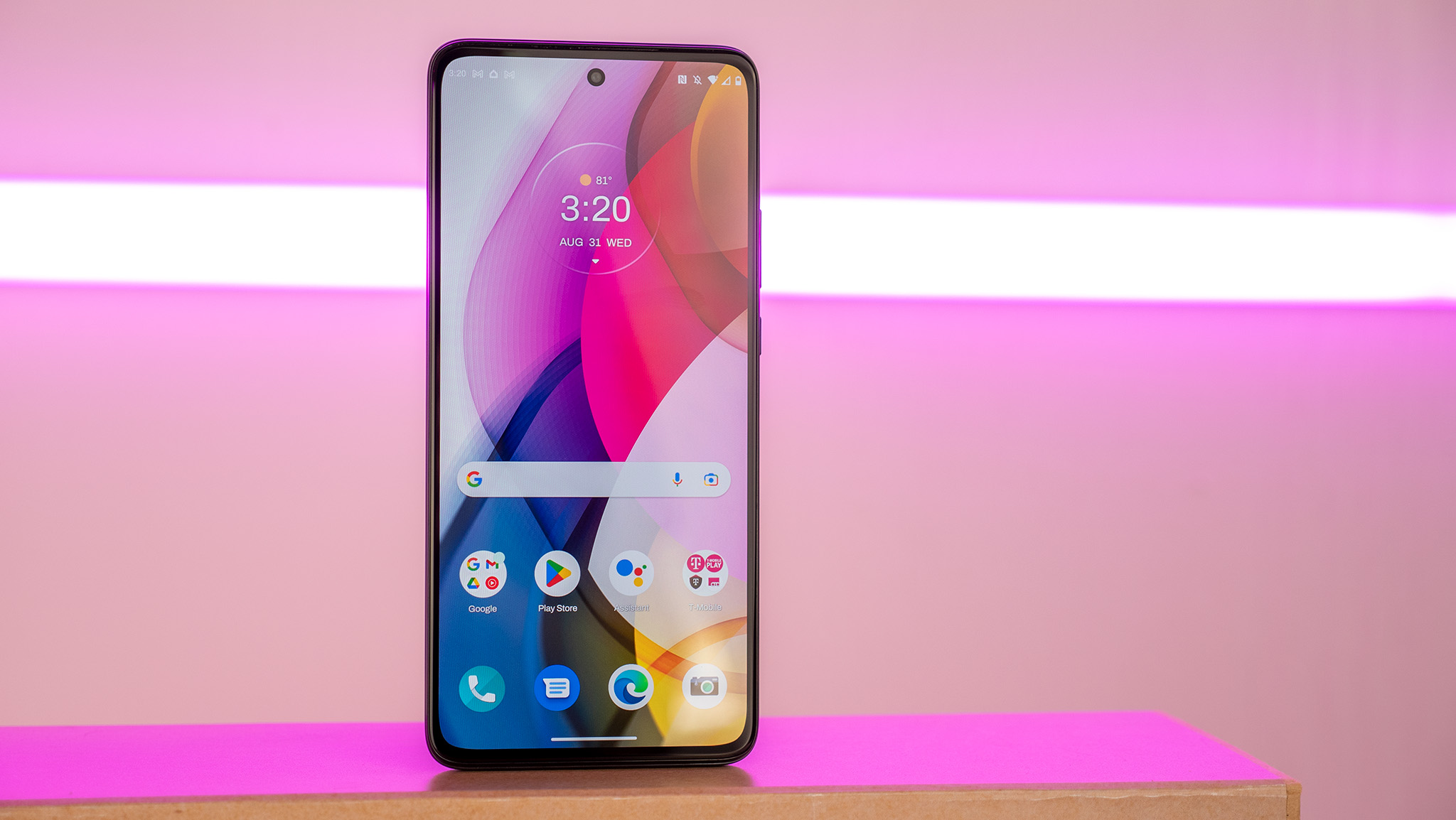
Motorola is using a 60% recycled paper box with no single-use plastics inside.
If it wasn't clear from the intro, I'm rather positive on the Motorola Edge (2022) overall. It's a surprisingly excellent phone from Motorola, and that excellence begins with the unboxing experience.
No, there's no fancy packaging or extra pack-ins that'll get you excited. Rather, it's the low-key nature of the packaging and Motorola's push to be more environmentally responsible that I like. First up, you'll find zero plastic in this box — well, aside from the phone, of course.
Too many modern products come wrapped in obnoxious amounts of single-use plastic that serves no real purpose other than to be thrown away. Motorola uses 60% recycled materials on all the packaging in the box, and the device itself is fully carbon offset, including the device's manufacturing process, packaging, and even transportation.
Motorola says it's working with UN standards to ensure it's being a responsible steward. It's hard to say that any particular company is truly environmentally responsible when it makes phones that aren't easily upgradable or repairable at home, but it's great to see some progress being made if we do eventually get to that point.
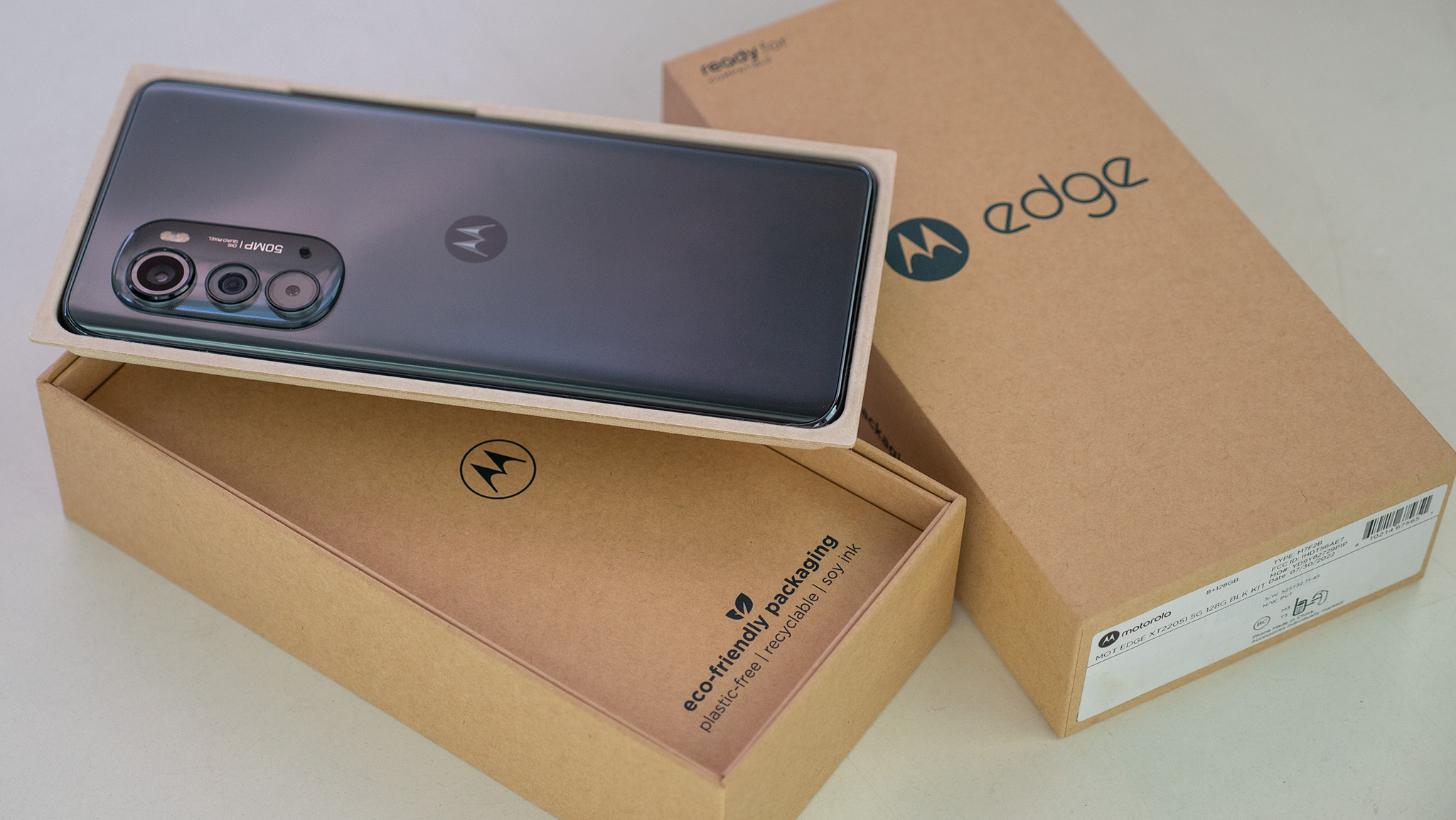
| Category | Motorola Edge (2022) |
|---|---|
| Display | 6.6" FHD OLED, HDR10+, 144Hz |
| Chipset | MediaTek Dimensity 1050 |
| Storage | 128GB/256GB |
| Memory | 6GB/8GB |
| Rear Camera 1 | 50MP wide-angle, f/1.8, 2.0μm, OIS, Quad Pixel, Omni-directional PDAF |
| Rear Camera 2 | 13MP ultrawide, 120° FOV, Macro Vision |
| Rear Camera 3 | Depth sensor |
| Selfie Camera | 32MP, f/2.45, 1.4μm, Quad Pixel |
| Battery | 5,000mAh |
| Charging | TurboPower 30W wired, 15W wireless, 5W reverse wireless |
| Connectivity | 5G (sub-6, mmWave), Bluetooth 5.2, Wi-Fi 6, NFC |
| Dimensions | 160.9 x 74.2 x 8.2mm |
| Weight | 170 grams |
| Colors | Mineral Gray |
Little about the phone is unique looking, but using it is somehow a joy, nonetheless.
The Motorola Edge (2022) is about as innocuous a device as you could possibly set your eyes on in 2022. Little about it is unique looking, but using it is somehow a joy, nonetheless.
The OLED panel up front is gorgeous, with a 144Hz maximum refresh rate. Out of the box, it's configured to automatically scale between 48 and 144Hz — with steps at 60, 90, and 120Hz in between — depending on what's happening on screen. For the most part, this scaling works extremely well, and the phone feels incredibly fluid during everyday tasks. Scrolling social media is a feast for the eyes, and the 360Hz touch response rate ensures that it feels as fast as it looks.
This panel gets very bright, too, topping out at 995 nits in lab tests conducted by our parent company, Future. Motorola says it's supposed to max out at 1300 nits under certain conditions, though, so it's possible that it could get even brighter while at the beach on a sunny day, for example. Either way, you won't have any trouble seeing this beautiful OLED panel.
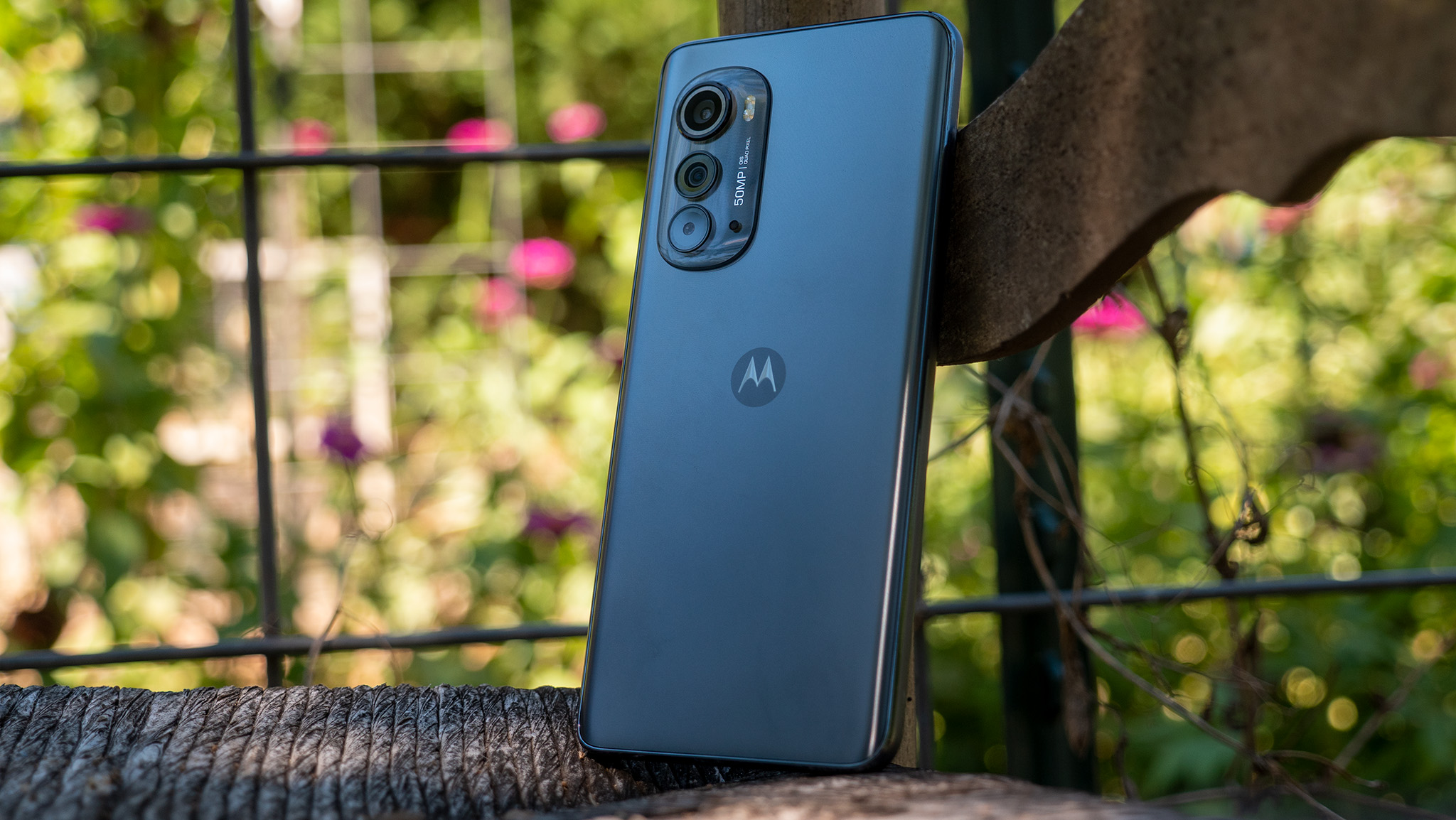
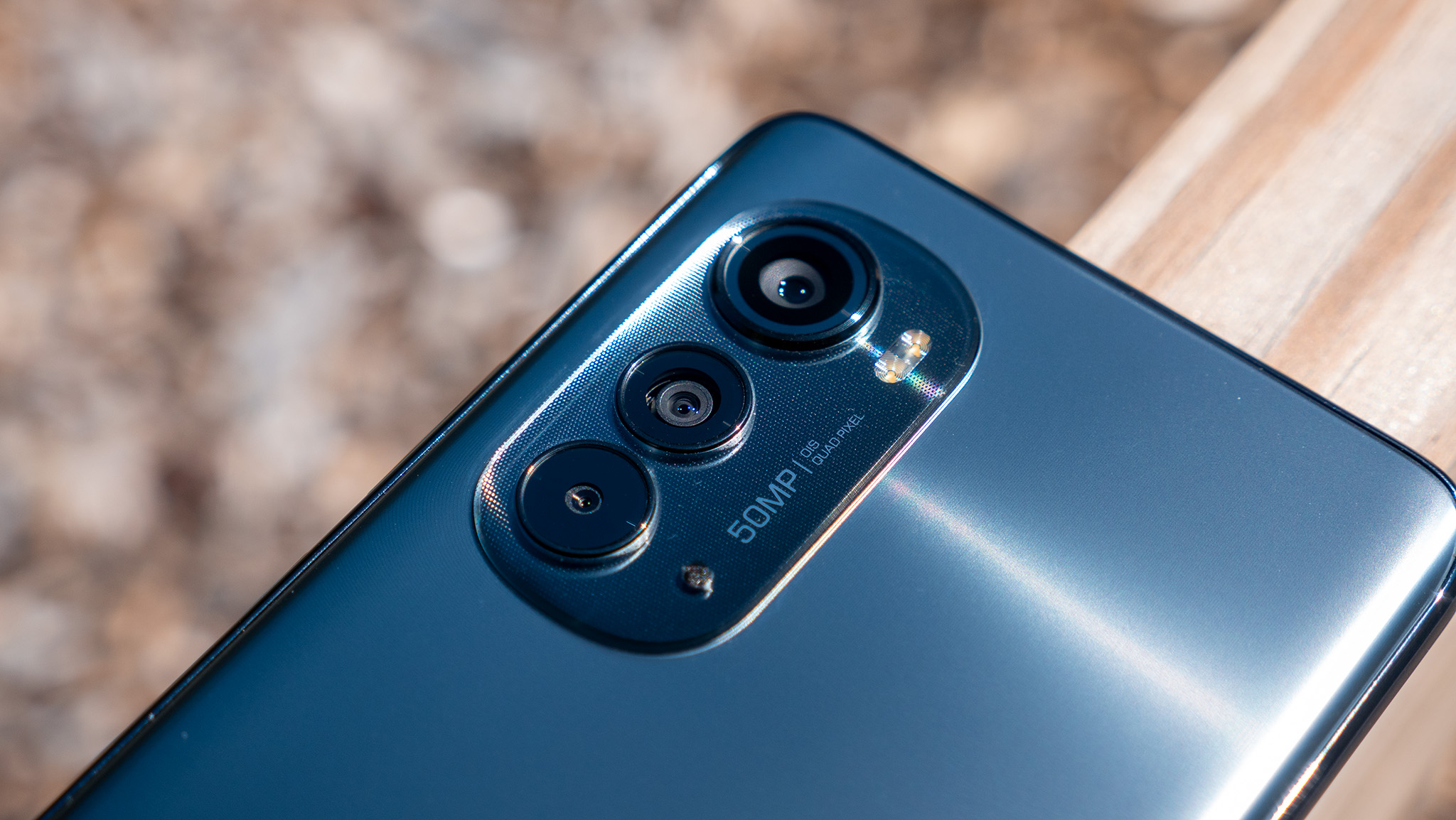
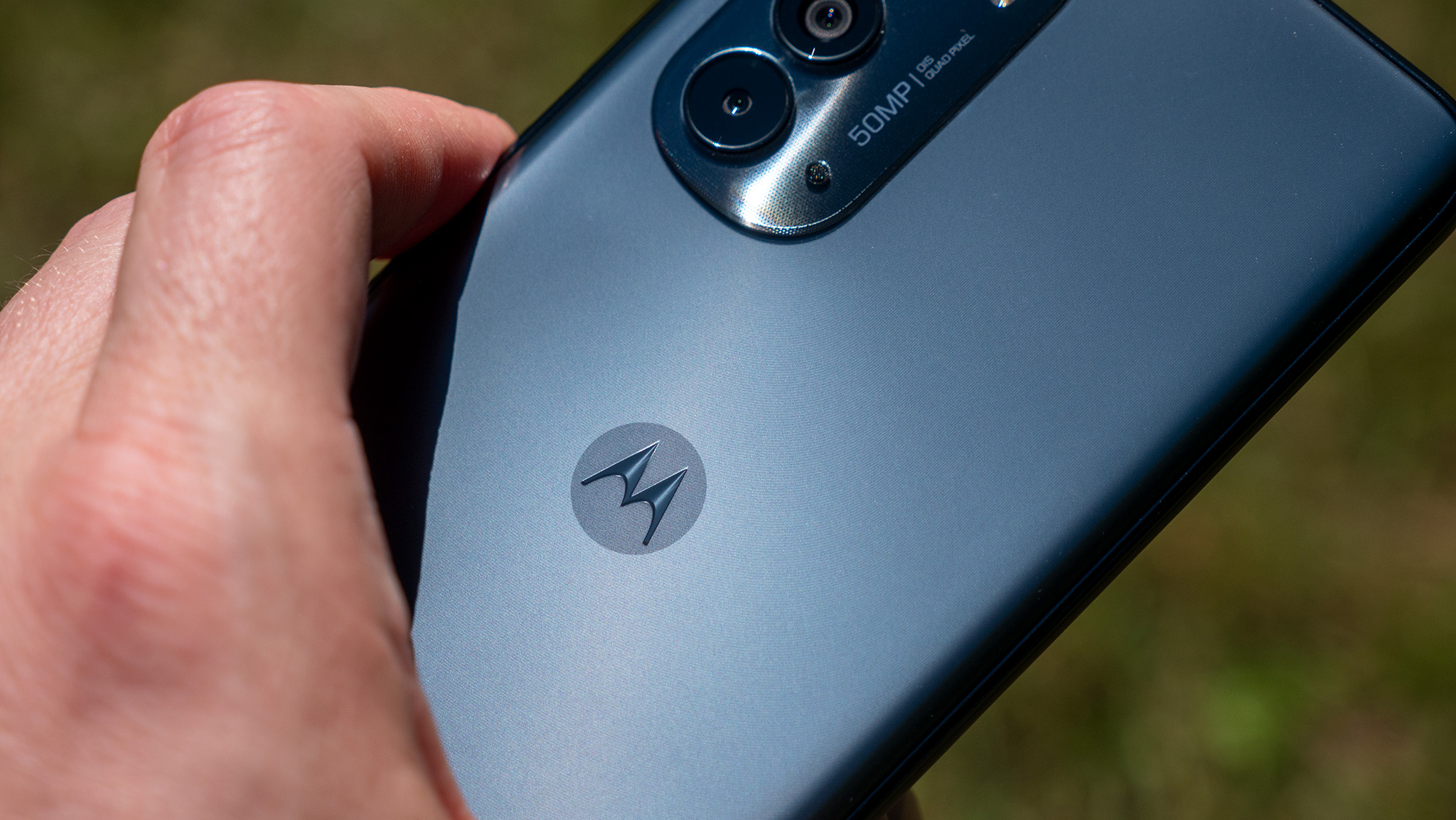
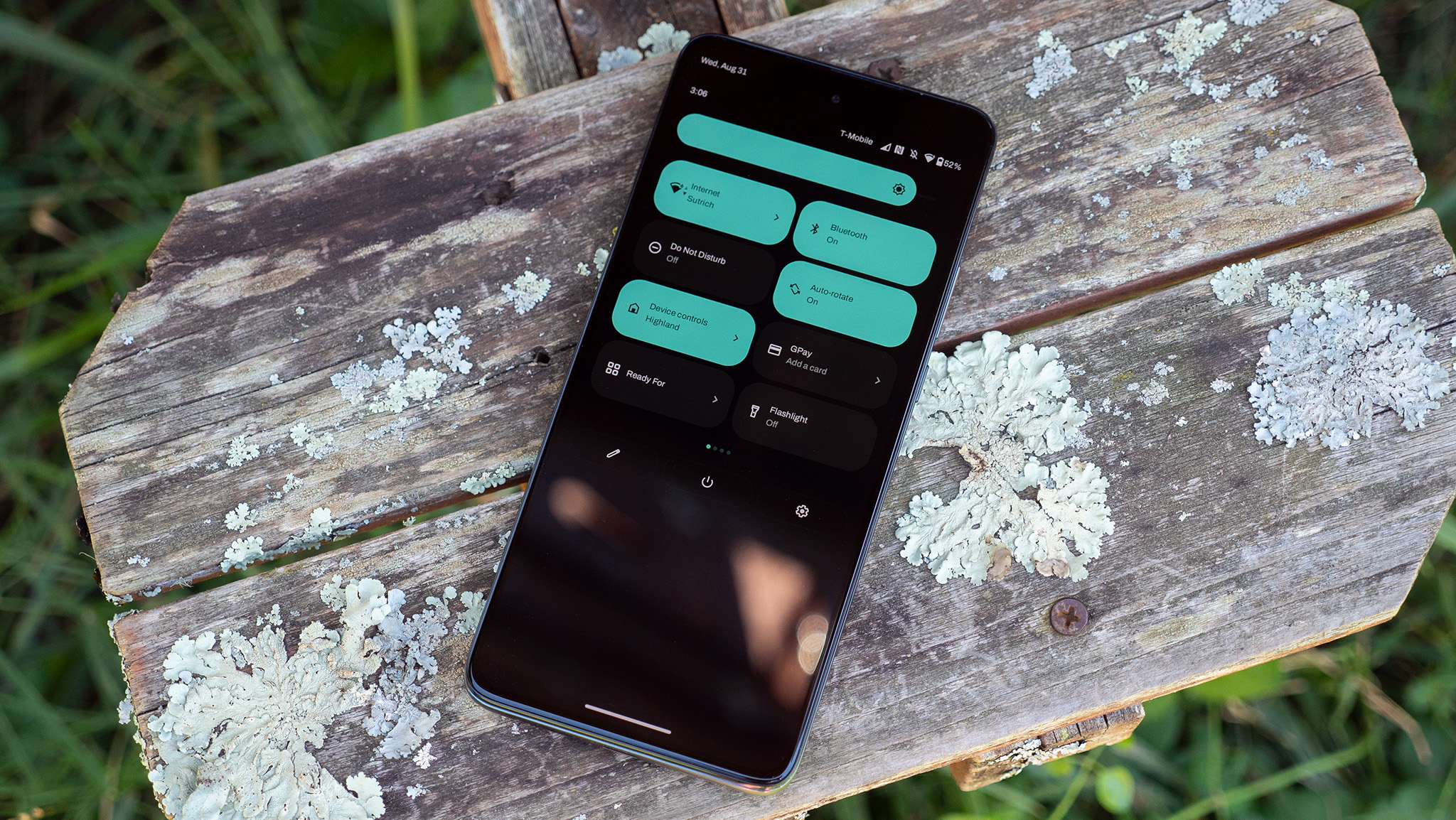
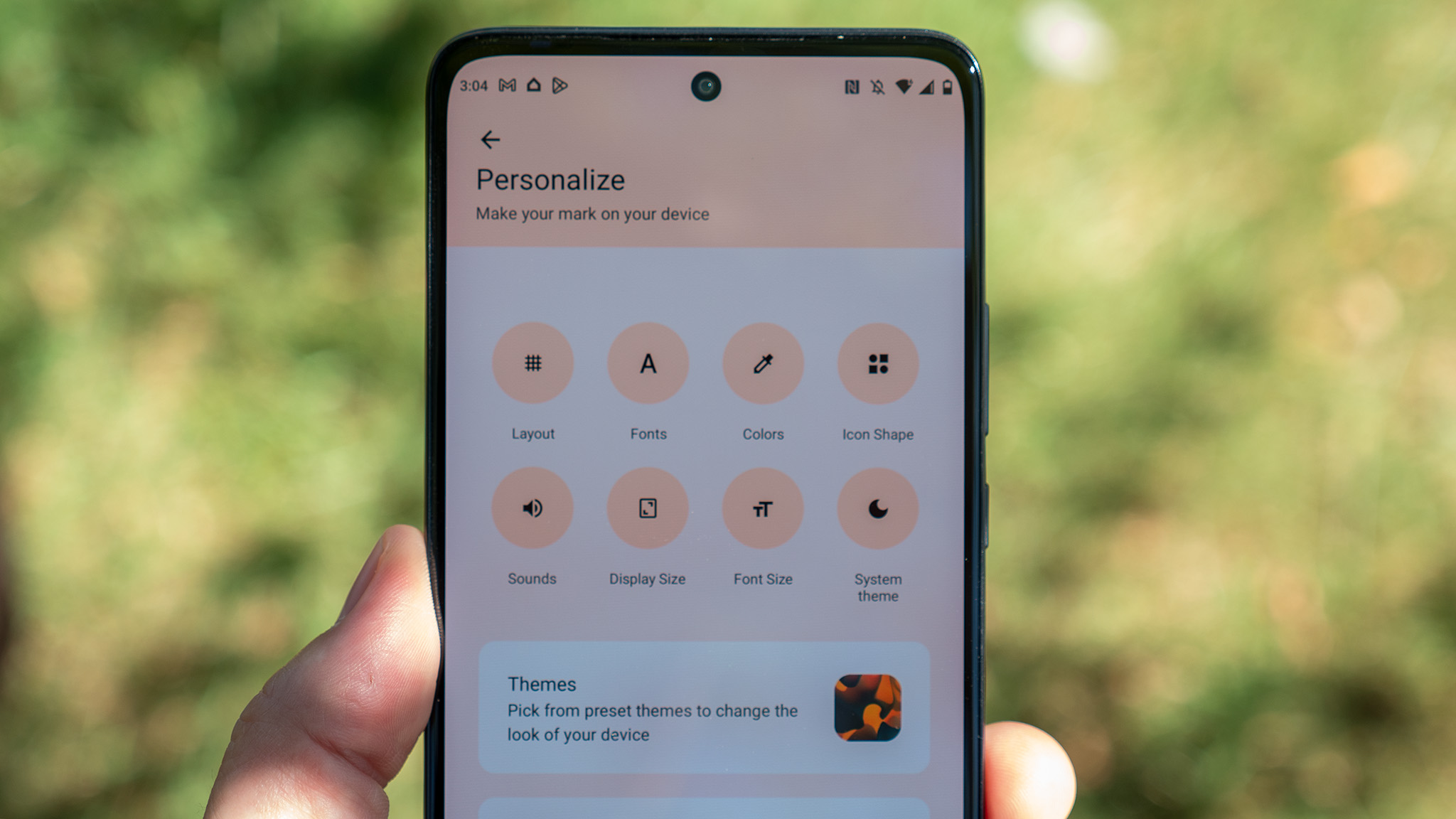
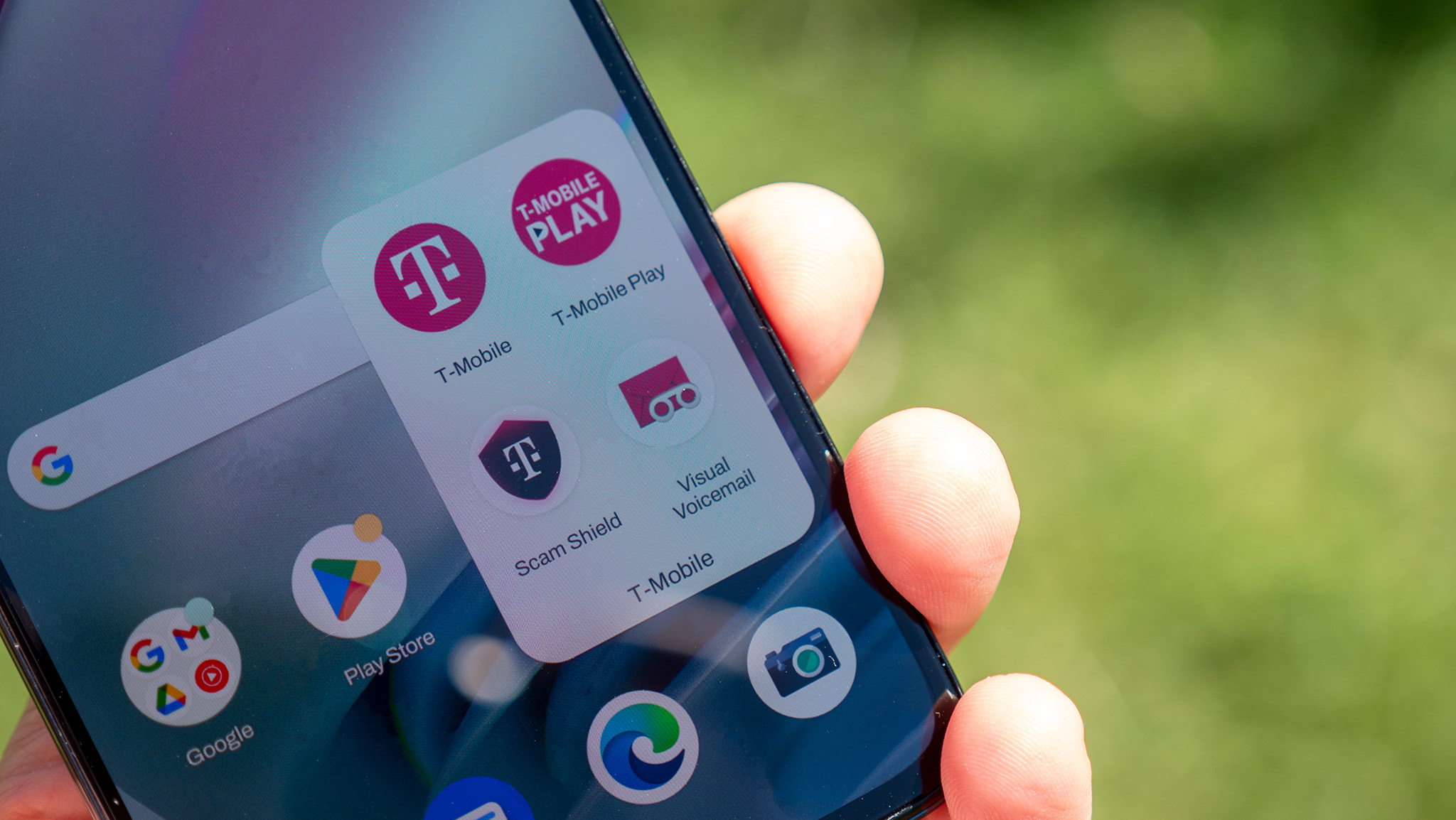
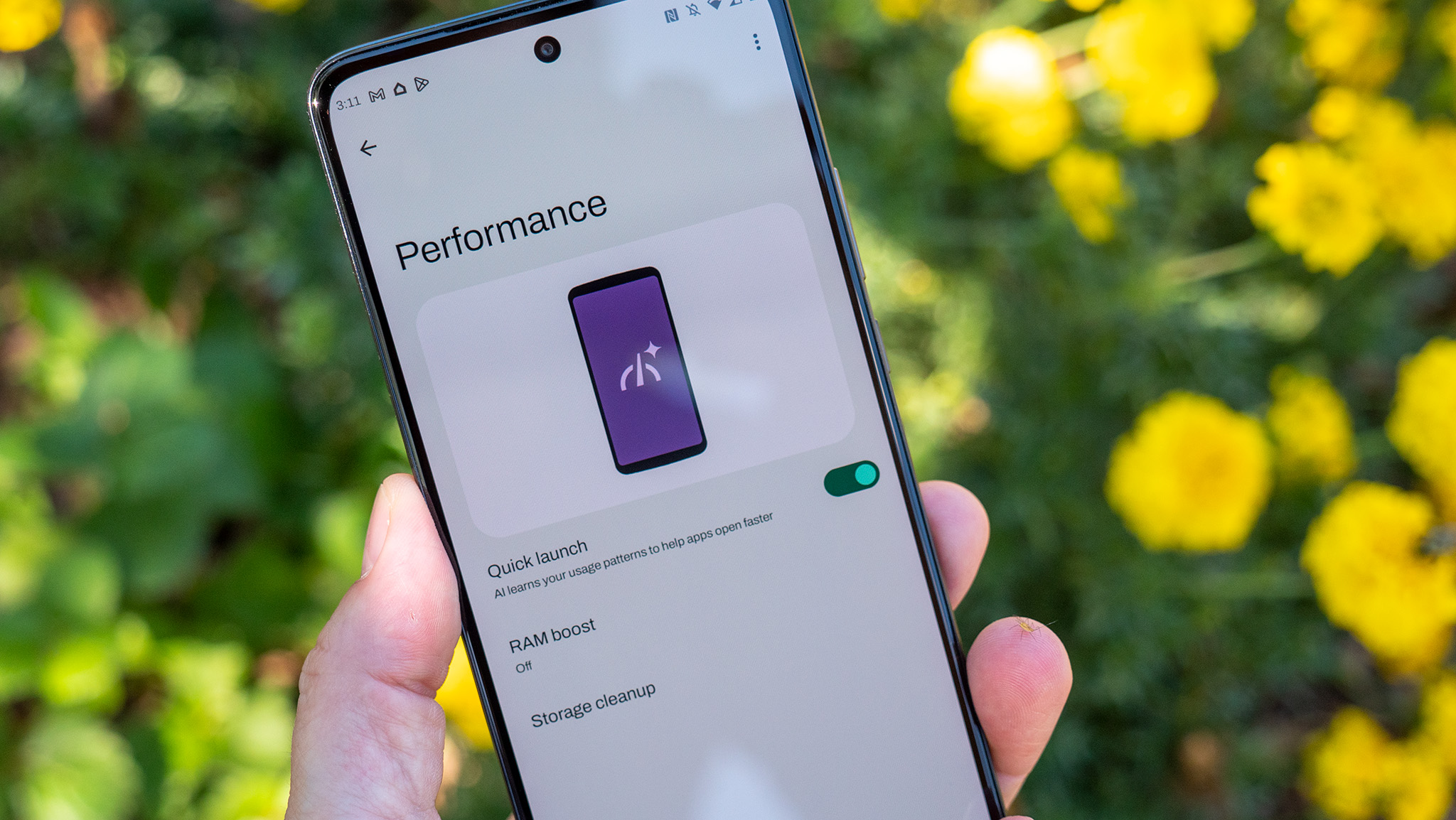
It doesn't get hot like many other phones, even after 30-minutes to an hour of game time, and battery life is a dream.
If you were concerned by Motorola switching from Qualcomm to MediaTek for this phone, don't be. At least, for the most part. While it does perform worse than the Google Tensor found in the comparably-priced Google Pixel 6a, the phone only struggled while playing graphics-intensive games.
It doesn't get hot like many other phones, even after 30-minutes to an hour of game time, and battery life is a dream.
For the first three days I had the phone, I purposefully didn't use it much just to see how long the battery could last. The best I got was three days off the charger with 1.5-2 hours of screen time. Normal phone use lasted well over a day, with the phone comfortably lasting halfway through the second day before needing a charge.
As this is a pre-release device, games like Fortnite don't have official compatibility, which limited my framerate to just 30FPS. Even still, the phone had no trouble maintaining that solid framerate and looking fantastic while doing it.
Other games, like Minecraft, run at unlocked framerates and definitely had trouble holding on to a consistent framerate. I used Motorola's in-game tools to limit the refresh rate to 60Hz while playing to ensure it wasn't wildly jumping between 144 FPS and something lower, but the experience still felt like it was obviously dropping frames.
Tools like Motorola's Game Time — which is a little floating bubble you can tap at any time while playing a game — are simple and easy to use, yet offer powerful features that make a difference. Switching the refresh rate on the fly is one great example of how helpful this tool can be.
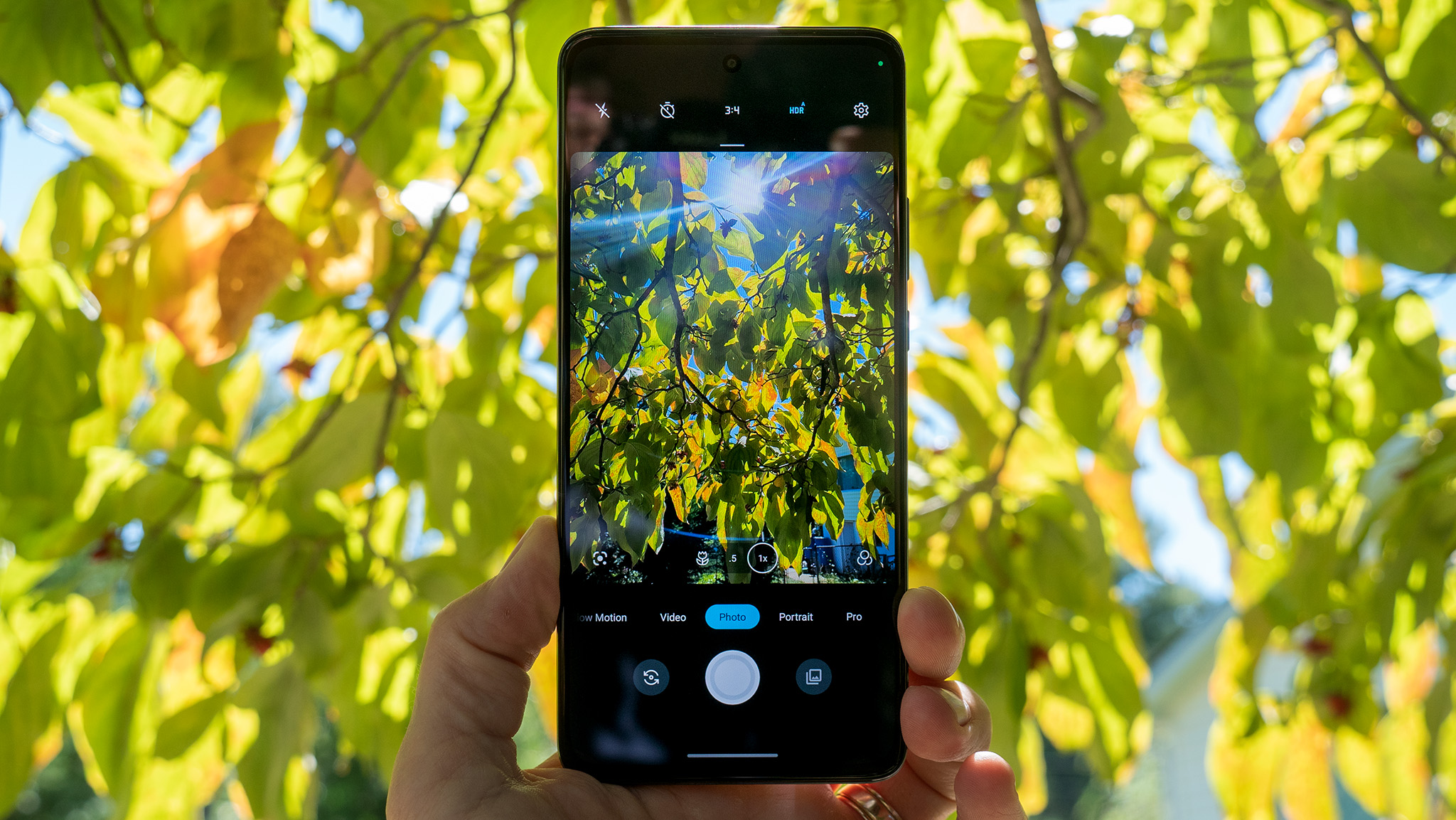
Motorola has gotten very good about letting users know that a feature exists at the exact time they might want to use one.
Game Time is just one of many tools and features that I love on Motorola phones. In fact, Motorola has gotten very good about letting users know that a feature exists at the exact time they might want to use one.
For example, when I set my screen timeout for a longer duration — which is an abysmal 30 seconds by default — a pop-up appeared telling me that I could use attentive display, instead. This uses the front-facing camera to keep the display awake so long as you're still looking at it. Not a new feature — Samsung introduced it on the Galaxy S4, after all — but telling me about it when I actually need it is a great way to surface useful features like this.
Related to this is a feature I thought I would miss — that's the shortcut drawer that appears when the power button is double-tapped — but has been replaced in my heart by the convenience that comes with an in-display fingerprint sensor, combined with Motorola's excellent always-on/breathing lock screen.
Here's how it works:
When a notification comes in, the display lights up the time and the icons of any apps that have unread notifications. Pressing and holding on a notification icon will show you a preview of that notification, including the first paragraph of an email or something along those lines.
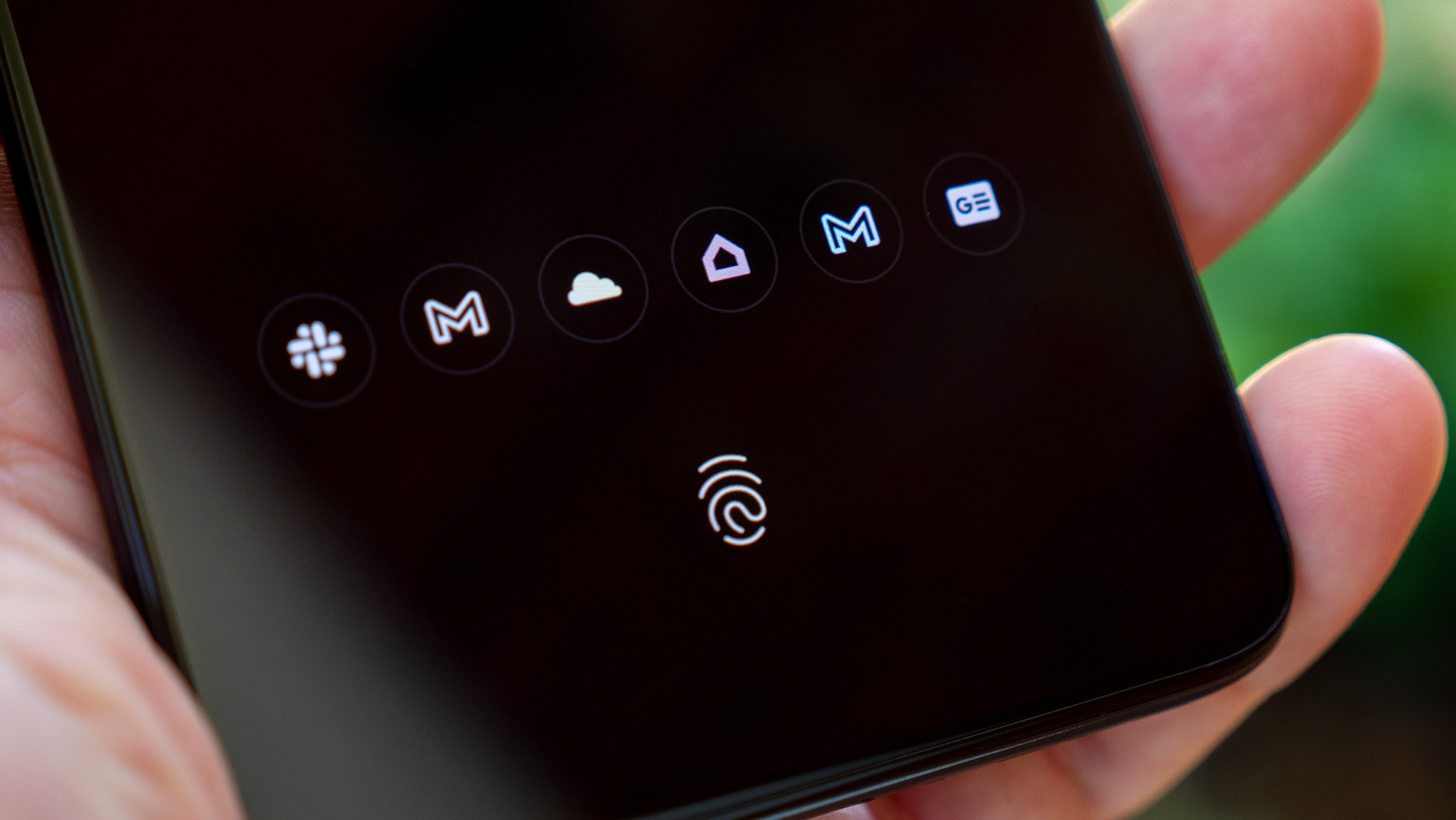
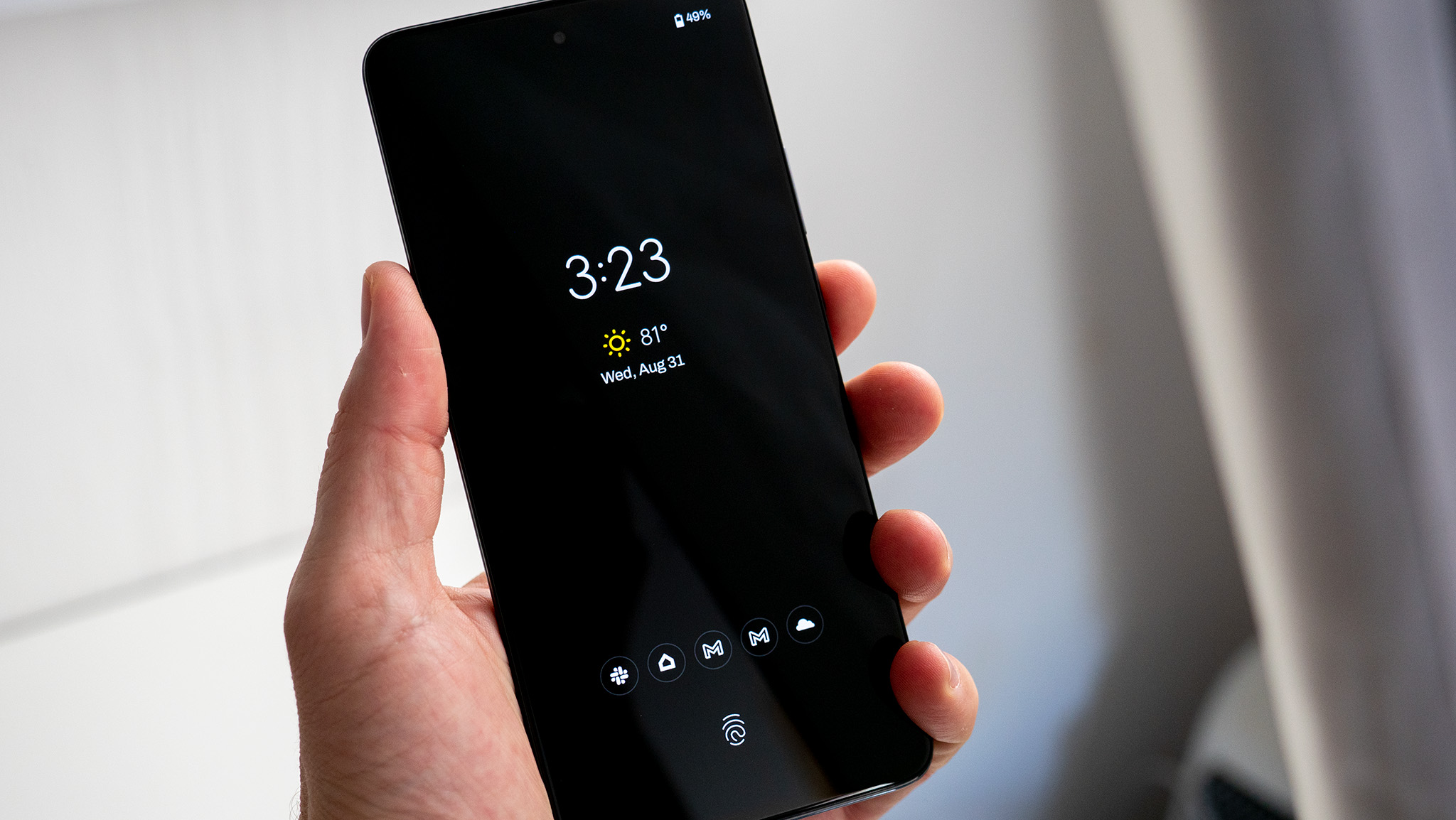
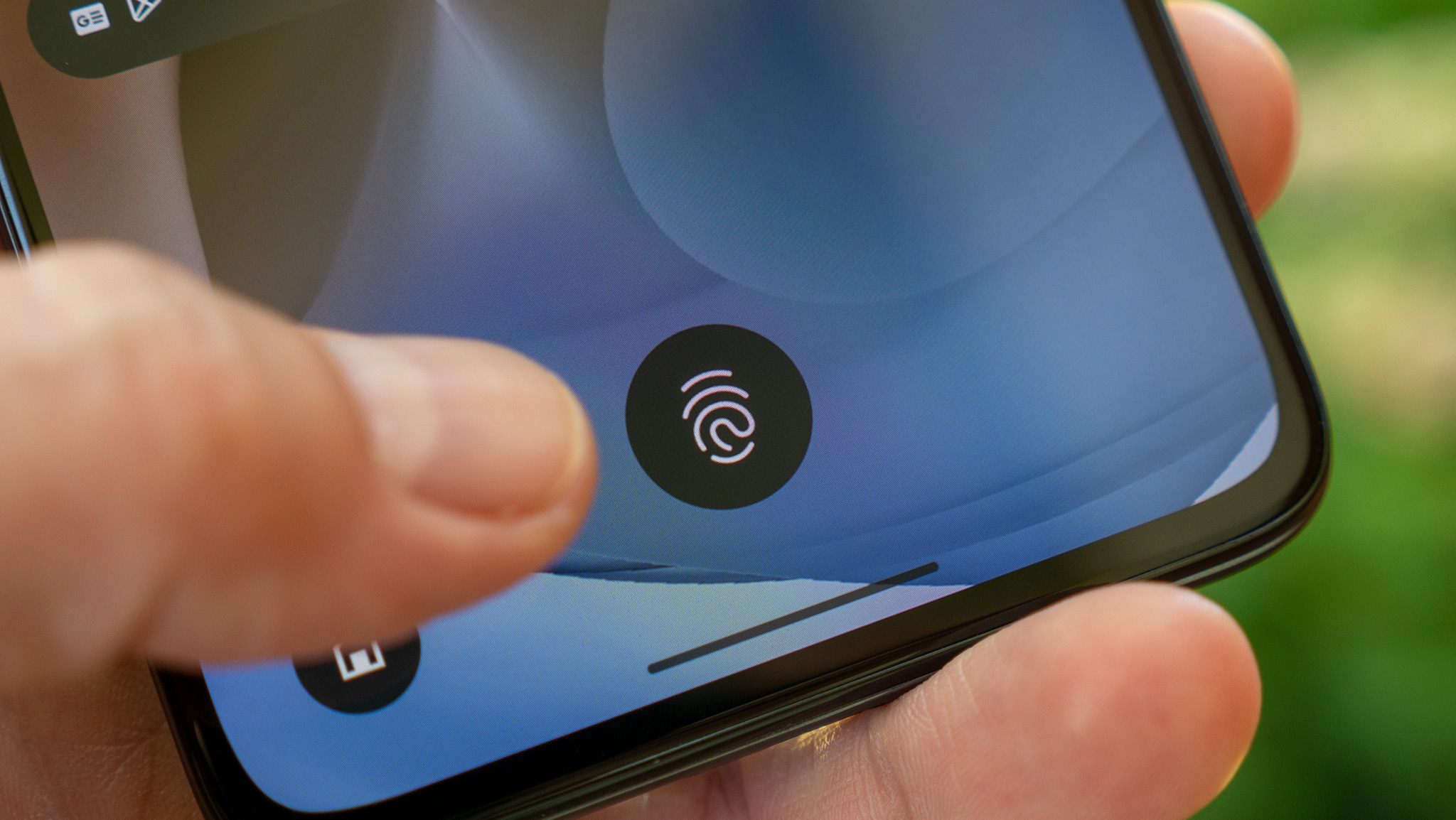
The Motorola Edge (2022) will see updates until Android 15, with an additional year of security updates beyond that.
If you want to open that app to that specific message, you'll just drag your finger (and the accompanying icon) down to the fingerprint sensor in the display. Boom. The phone is now unlocked and the app/message in question has been opened. It's incredibly intuitive and it shows how well an existing feature (the breathing display) can be adapted to new technology (the in-display fingerprint sensor).
In general, though, Motorola's version of Android 12 is stellar. It looks and feels minimalist while still offering features that matter on a daily basis. Even better, the Motorola Edge (2022) will see updates until Android 15, with an additional year of security updates beyond that. Now that's something to celebrate.
On the camera front, Motorola has substantially upgraded the macro camera experience this time around, giving the ultra-wide camera the ability to focus up close, with a dedicated macro mode button right on the viewfinder. It's still not the best macro camera I've ever seen due to the general "softness" of the images, but it's a great step in the right direction.



Part of what makes it so good is that Motorola outfitted the Edge (2022) with sensors that have both optical image stabilization (OIS) and omni-directional PDAF. The former ensures your photos are less shaky, while the latter ensures that even small objects — like the ones you might try to use macro mode on — are in focus nearly instantly. Check the berries in the photos above for an example of that.
I also have to say that Motorola has done some good work of improving low light performance on the main sensor — and that sensor, alone. In several situations, I found that the Motorola Edge (2022) took a better moderate-to-low light shot than the more expensive Samsung Galaxy S22. This didn't occur often enough to call Motorola a low-light winner by any means, but seeing this uptick in winning scenarios once again shows Moto moving in the right direction.
Motorola has also further tweaked its camera app with automated mode switching, and intelligent toast navigations that suggest when users should switch to a different mode. Like the other features of the OS, Motorola's suggestions seem to come just at the right time, helping users take better photos and videos.
Motorola Edge (2022): What I don't like
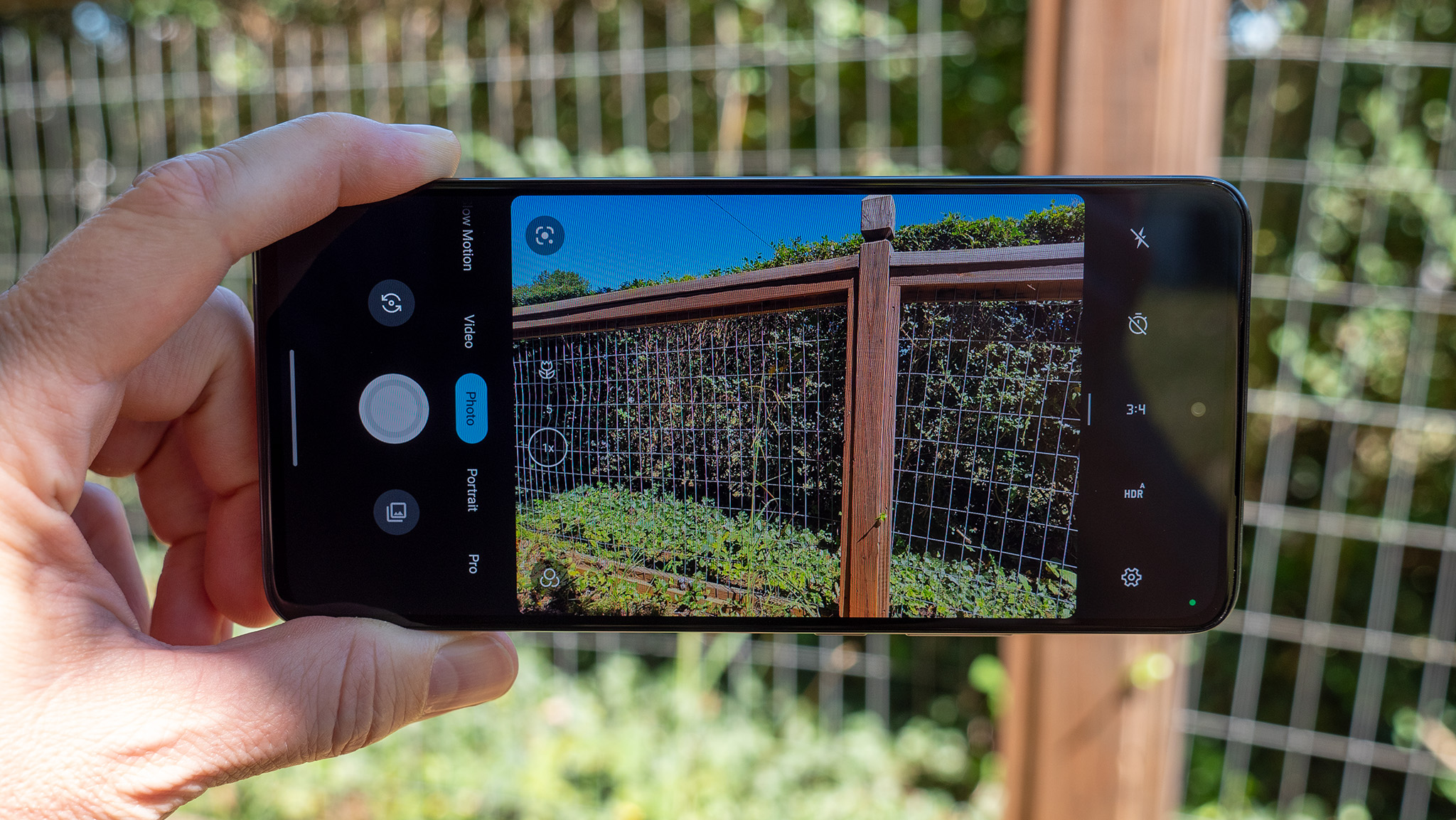
The Motorola Edge (2022) has some of the worst haptics I've used on a phone in recent memory.
When I first unboxed the Motorola Edge (2022) at home, I immediately turned it on and handed it to my wife. I didn't say anything, I just wanted to see what she thought without poisoning her opinion of the phone's build quality.
She spun it around in her hand and, without a moment's hesitation, said "I don't like this phone. It feels cheap."
I recently appeared on a podcast with Myriam Joire where we discussed this exact topic. Having both been at the same event where we went hands-on with the Motorola Edge (2022), it made perfect sense to discuss Motorola's latest endeavor, and we both came to the same conclusion that my wife did: This is a cheaply-built phone.
To make matters worse, the Edge (2022) has some of the worst haptics I've used on a phone in recent memory. It might sound elitist, but I actually cringed for the first 5 minutes of use after I initially powered it on.
Further use proved my initial feelings, as the vibration motors are so slow and bad they couldn't keep up with my two-thumb typing speed. While typing, only one in three keys I tapped would actually make the phone vibrate. Not good.
While Motorola has worked to improve its camera software and overall quality, it still has a long way to go to match what companies like Google and Samsung can do. The main camera has seen the biggest improvement, but Motorola's processing often still creates a photo that looks worse than the competition. Colors are extremely muted and unrealistic, and the HDR algorithm often turns small details into watercolor paintings when zooming in.



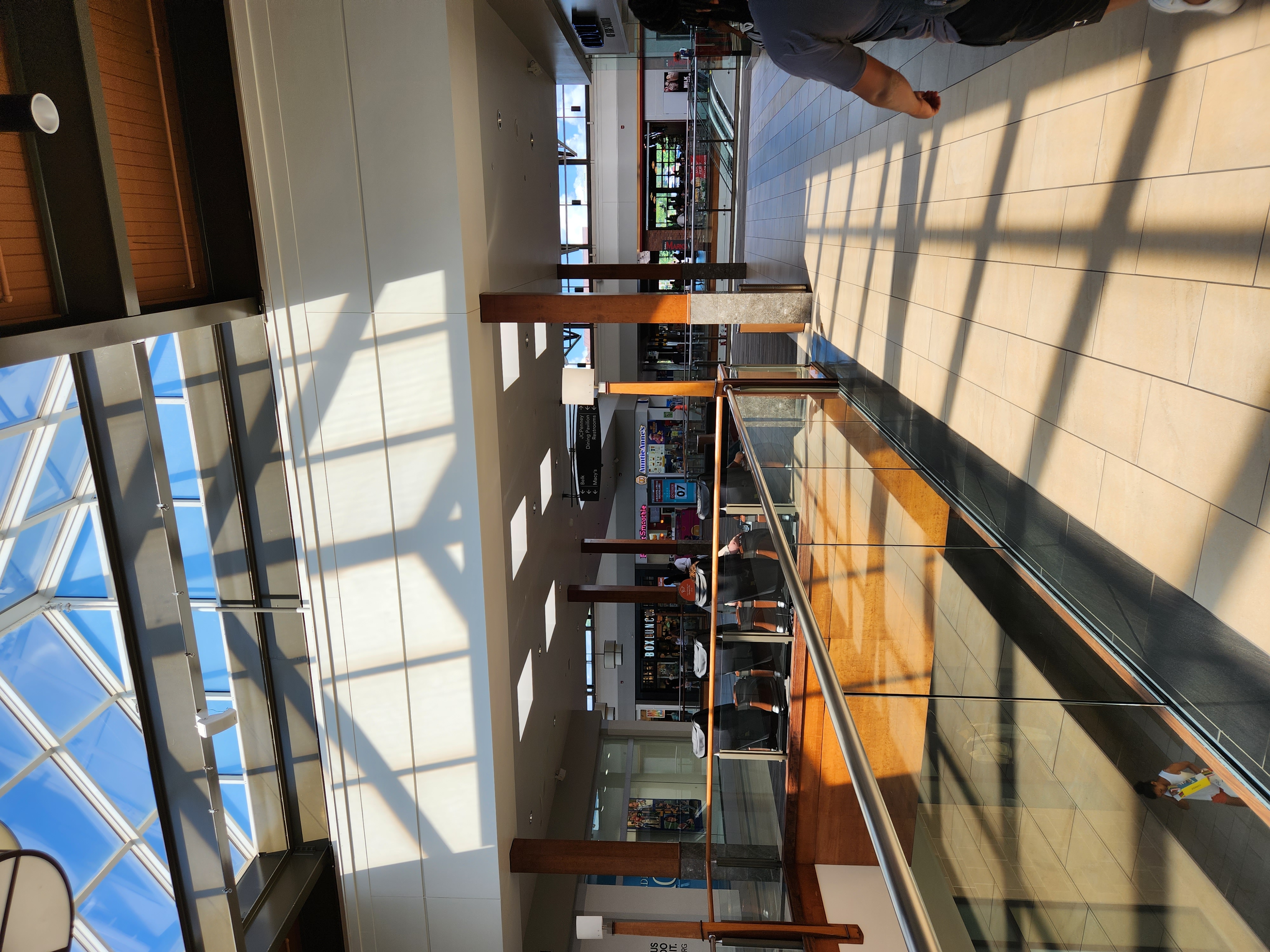


The ultra-wide camera, like last year's phone, really isn't very good. It'll get the job done, especially when viewed only on a phone screen, but the image falls apart immediately when viewing it on a larger display. Images look heavily processed and often oversharpened, resulting in muddy images with crushed blacks and lots of fringing.
I also found the color balance to be way off in many situations. Lots of green grass in the frame would turn the photo unnaturally blue, while other situations resulted in extremely muted colors as I said above. The camera also seemed to struggle with HDR in bright light, as it often overexposed photos when a mix of shadows and sunlight were present in the same shot.
Lastly is the shutter lag I experienced in all kinds of light. Motorola is doing a lot with this camera software, and it shows it in the performance. Several times during the review I'd tap the shutter button, only to have it take a photo a second or two later. Many times, this was because the phone was trying to find the best frame to actually snap, but the lag time in the UI makes the experience a very bad one.
I seriously couldn't get over how bad the photos were coming from the front-facing camera.
Flipping the phone around, I found that most photos taken with the front-facing camera were awful. This is despite Motorola's crooning about the new 32MP sensor onboard.
I seriously couldn't get over how bad the photos were coming from the front-facing camera, and I am not sure I've seen a worse front-facing shooter since the advent of the under-display camera on the Galaxy Z Fold 3. Bright light, low light, it really doesn't matter. Every sample I took was abysmal.
If you take a lot of selfies, do not buy this phone.




Motorola Edge (2022): Competition
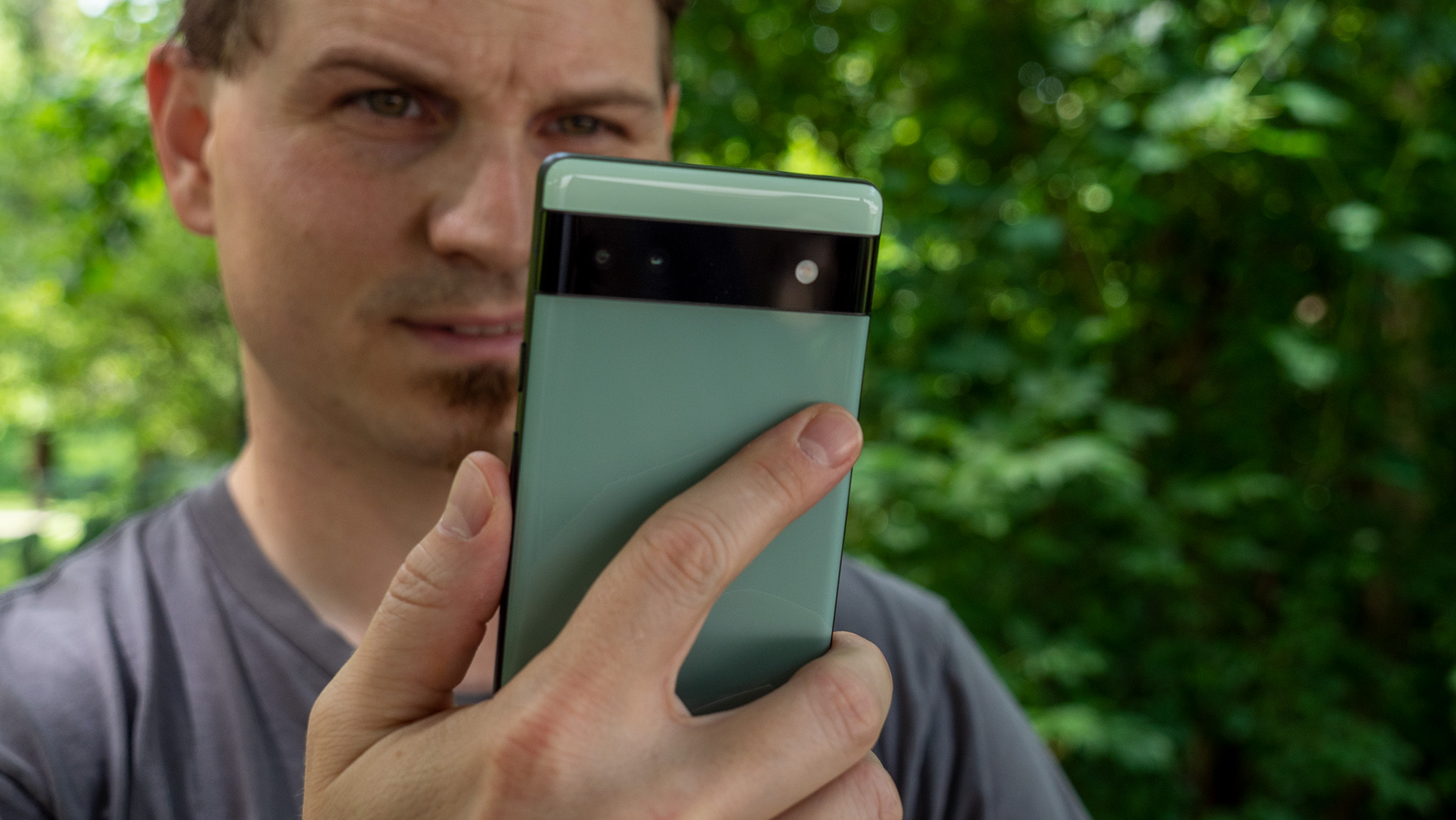
At $500, I would heartily recommend the Google Pixel 6a over the Motorola Edge (2022). You'd be saving $50 and getting a phone that's far better built, has one of the best cameras in the business, and sports plenty of great Pixel-exclusive software features. It's not 100% better though, as you'll only get a 60Hz display on the Pixel 6a, the fingerprint sensor is a far worse experience than Moto's, and battery life isn't nearly as good as what the Edge (2022) delivers.
The OnePlus 10T is another excellent alternative for about $50 more than the full price of the Motorola Edge (2022), and very well could be found for less from carriers like T-Mobile. OnePlus offers the exact same update promise (Android 15, four years of security updates) as Motorola, and offers a phone with an incredible build and haptics engines, far better cameras, and the fastest processor currently available. Really a no-brainer if you can get it for the right price.
Most carriers will offer the Samsung Galaxy S22 at around the same price (or less) as the Motorola Edge (2022), which would be a preferable option in almost every single way. While the battery life could be better, the S22 offers a far, far better camera experience, more software features, and the promise of one additional Android update beyond Motorola's offering here. Check out these great Galaxy S22 deals if that sounds good, otherwise, if you can't find a deal on it, this one might be out of the price range.
If higher refresh rates are important to you and you live outside the U.S., the Nothing Phone (1) is another great example of a phone with good battery life, similar performance, and a bright OLED display with a fast refresh rate. It also takes better pictures than Motorola's offering here, although it's not worlds better, and both phones feature a similar update promise.
Motorola Edge (2022): Should you buy it?
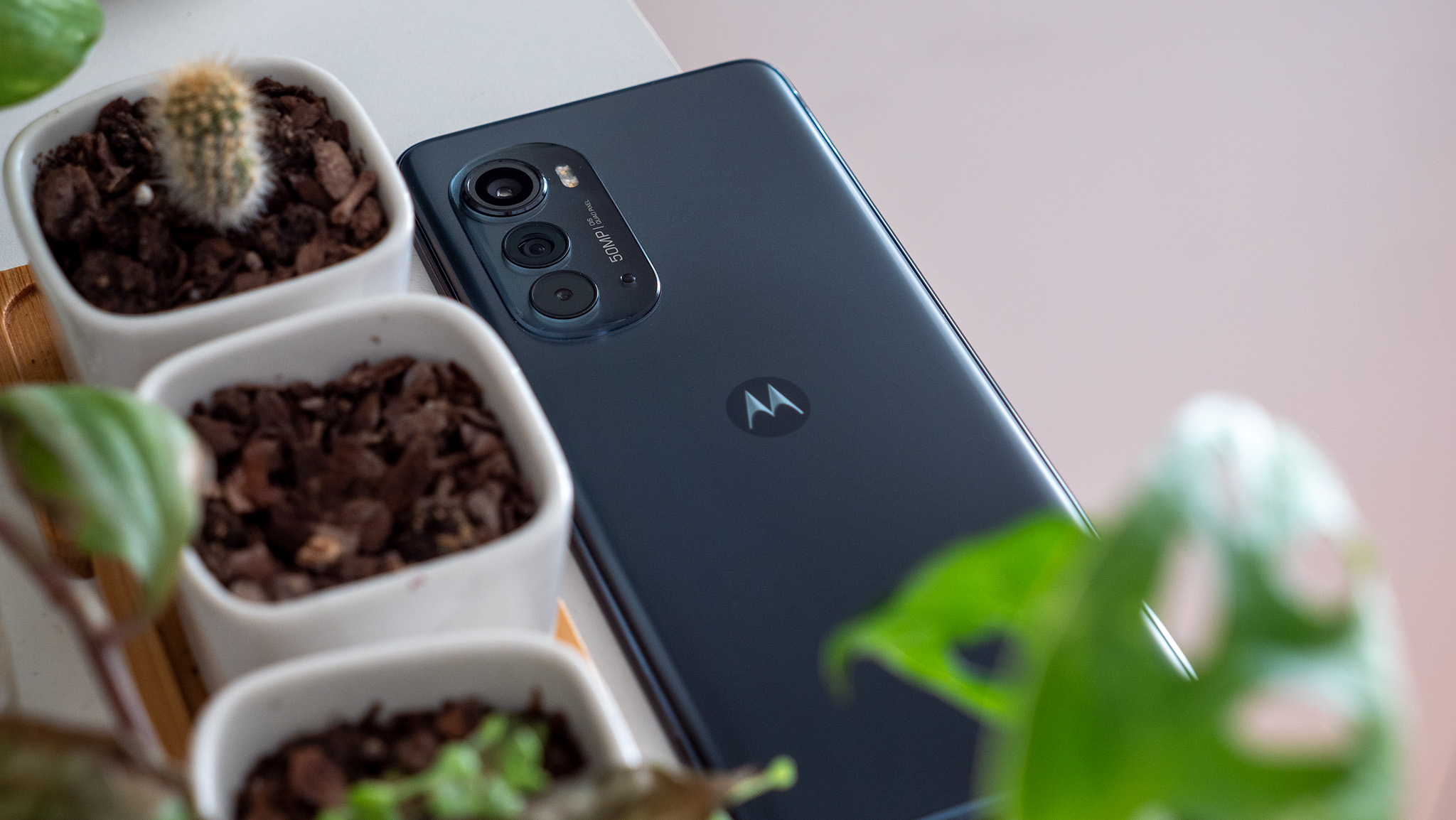
You should buy this if...
- You like Motorola's minimalist software and features.
- A bright display with a fast refresh rate is important to you.
- You need great battery life.
You shouldn't buy this if...
- You need a really good camera.
- You play lots of graphics-intense mobile games.
- Haptics and build quality are important to you.
All I've got to say is: it's about time, Motorola. If it weren't for the fact that Motorola continues to hold the number three spot in the U.S., this would feel like an underdog story. The Motorola Edge (2022) is far from perfect and faces a swath of phones in this price range that do many things better than it, but this is easily the best phone Motorola has made in 2022.
There's no getting around how bad Motorola's camera experience is, though. While it's considerably better than the Edge (2021) or Edge+ (2022), it's still a worse experience than anything else in this price range, both in camera viewfinder performance and overall photo and video quality.
But, if a bright OLED display with 144Hz refresh rate and Motorola's great minimalist software is more important to you than a great camera, this could be a great way to go (or stay) Moto in 2022, without feeling bad about your purchase later. It's the first Motorola phone I've reviewed all year that I can personally recommend to a subset of users, and one that's easily recommendable if you get it for the right price — like that T-Mobile promotion where you can get one for free.

